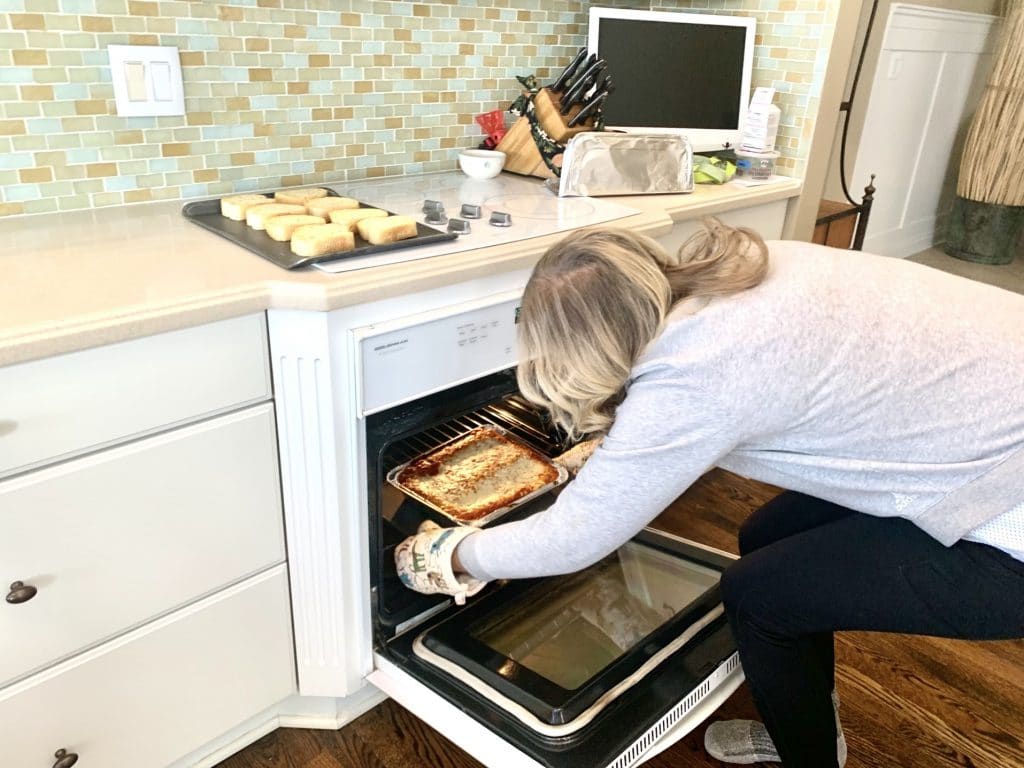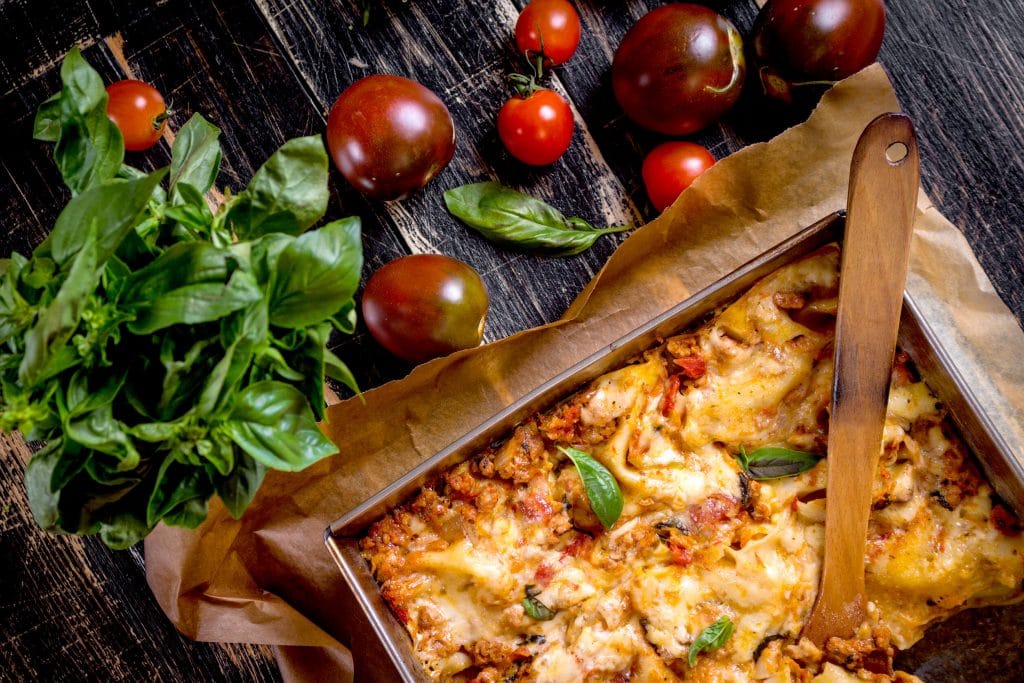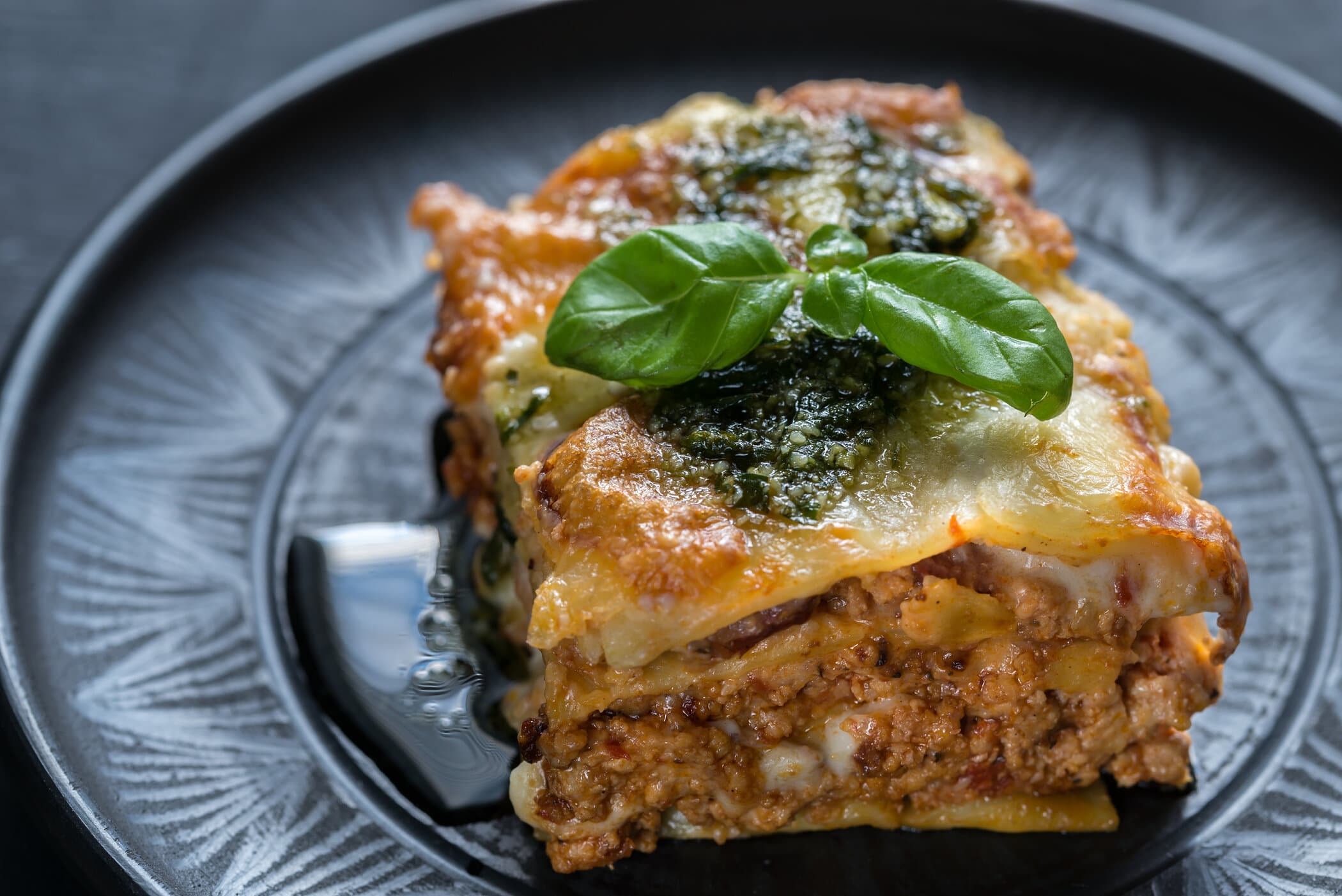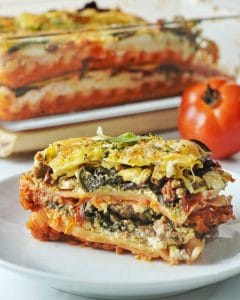How To Speed Up Frozen Lasagna Cook Time?
Important Note: When you buy through our links, we may earn a commission. As an Amazon Associate we earn from qualifying purchases. Content, pricing, offers and availability are subject to change at any time - more info.
One of the easiest and quickest ways to have a full meal with little preparation is to heat a frozen dinner. When you’ve come home from a long day at work and want to pop a meal in the oven, foods like frozen lasagna hit the spot. But the wait time can be a killer, so are there ways to speed up that frozen lasagna cook time when you’re starving?
Frozen lasagnas are designed to be cooked in the oven from frozen. The cooking time for the average frozen lasagna is 90 minutes, but you can lower this time by defrosting the lasagna beforehand. A defrosted lasagna takes around 60 minutes to cook, cutting 30 minutes from the cooking time.
That hour and a half wait for your frozen lasagna to cook can be just too much to face when you’re tired and hungry. Here are several methods that will speed up your lasagna cook time. In general, frozen foods will take longer to cook as they will have to thaw before the oven begins to heat them. Premade shop meals are often designed to be pulled straight from the freezer and into the range, eliminating any unnecessary steps, but you can use these methods to make cooking less time-consuming.
How To Speed Up Lasagna Cook Time

With pre-cooked store-bought meals, one of the most accessible options to decrease the cooking time is to take your lasagna out of the freezer the night before and place it in the refrigerator to defrost. Never leave your frozen lasagna on the kitchen counter overnight, as you may compromise your food safety; always leave it to defrost inside the fridge.
By defrosting your lasagna, you may be able to reduce the cooking time by up to a third.
Suppose you have leftover homemade lasagna that you have stored in the freezer in a glass or ceramic tray. In that case, you will need to defrost these ahead of time before heating, as the cookware is not designed to go from a subzero temperature to a hot oven. To avoid your cookware cracking and breaking, always defrost leftover glass pans of food before reheating your meal.
Smaller portions will cook faster than larger ones, so if you can split your lasagna portions, this will speed up the cooking time, sometimes by up to half.
Another way to reduce cooking time is to bake your lasagna in a convection oven if you have one. A convection oven can reduce your cooking time by nearly 25%. Consult the packaging for the exact time and temperature suggested for a regular oven baking, and reduce that time by 25%.
In other words, if the packaging suggests a cooking time of 65 minutes, you can reduce that time to approximately 49 minutes at the same temperature setting when using a convection oven.
Defrost Frozen Lasagna In The Microwave

If you forgot to remove your frozen lasagna from the freezer the night before, you might still be able to defrost it before reheating, though it will depend on your packaging. If you defrost homemade lasagna, remove it from its pan, place it in a suitable microwave-safe dish, and select the appropriate defrost settings. If you will oven-bake your lasagna afterward, make sure the bowl you use is oven safe.
If you don’t feel the need to oven-bake your defrosted homemade, pre-cooked lasagna, you can simply heat it in the microwave. By adding a little water on top of your defrosted lasagna and covering the bowl, you will help keep the lasagna moist as it reheats.
Some frozen lasagnas are designed to be defrosted and heated in the microwave. When using a brand like Stouffer’s frozen lasagna, follow the instructions on the box to ensure your lasagna comes out perfect. Usually, the film is not pierced when defrosting but pierced for reheating.
If a pre-made frozen lasagna comes in a tinfoil or metal-based serving container, do not put it in the microwave. These types of serving trays are designed for food to cook faster in the oven due to the heat conduction of the tinfoil. However, aluminum foil, often used in take-out containers, is not microwave-safe.
While some aluminum foils may be put in the microwave, it is too risky to do so unless you know that the metal will not damage your microwave.
How Long Does It Take A Frozen Lasagna To Bake?
Frozen lasagna is one of America’s most popular convenience foods, partly because it’s so hearty and filling. Making lasagna from scratch is a lengthy process involving cooking and preparing different sauces and – in specific recipes – par-cooking lasagna sheets. And that doesn’t even include the baking time!
Very few people today have the time or inclination to prepare a lasagna from scratch, especially at the end of a long workday.
With a pre-made shop-bought lasagna, the only time needed is the cooking time in the oven.
The average 38 oz frozen lasagna has a cook time of approximately 75-90 minutes when cooked straight from the freezer in a conventional oven. Larger, family-size lasagnas will take longer, usually around an extra 20 minutes.
When defrosted first, expect a 38 oz lasagna to take 55-65 minutes when cooked in a conventional oven at 350 degrees.
What Temperature Do You Cook A Frozen Lasagna?

Fresh lasagna is typically baked from 350 to 375 degrees. However, frozen lasagna will have specific cooking times and temperatures on the packaging, which should be followed for the best results.
When reheating leftover lasagna, the suggestion is to use a lower temperature of 200 degrees Fahrenheit, though the exact temperatures and time will usually be indicated on the packaging. If you have defrosted your frozen lasagna, you may reduce the cooking time, possibly by 20-30 minutes, depending on the size.
Larger and thicker lasagna may have higher cooking temperatures to ensure all the layers are thoroughly heated through.
It is not good to crank up the oven temperature to heat a frozen lasagna faster. The result will most likely be a lasagna that is burned and blackened on the exterior while the interior is still cold or even frozen!
Ultimately, the cooking time of frozen lasagna can be reduced by defrosting first and using a convection oven. These methods can help you drop the time by 20 or more minutes, meaning you can enjoy a delicious meal sooner.
























